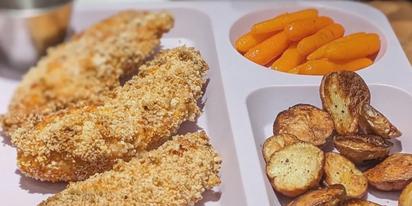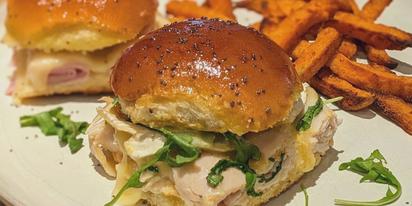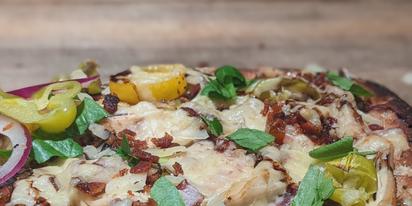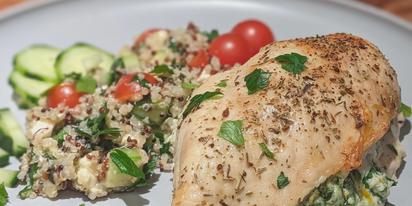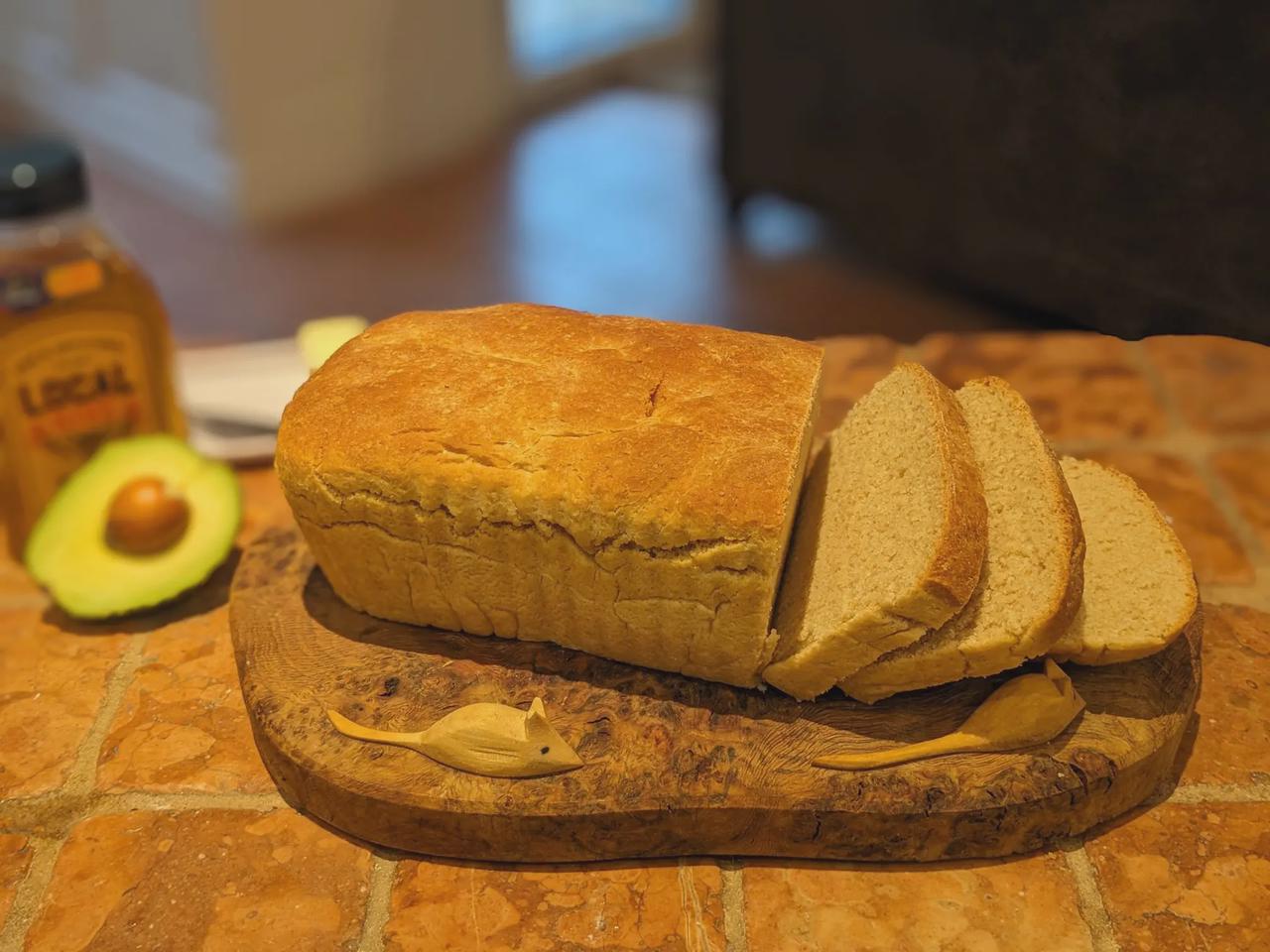
The Prompt
Please give me a recipe for high-fiber white bread.
The Ultimate High-Fiber White Bread: A Healthier Twist on a Classic

There’s something undeniably comforting about a slice of fresh, homemade white bread—its soft texture, the warm, yeasty aroma, the way it pairs perfectly with just about anything. But what if we could enjoy all the delights of classic white bread while boosting its nutritional value? Enter the world of high-fiber white bread, a recipe I’ve perfected over time to bring you the best of both worlds.
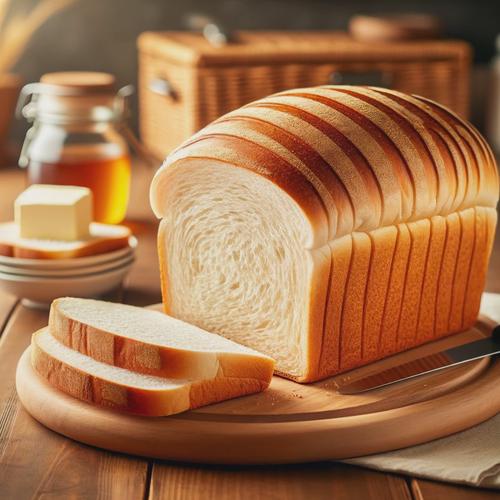
Why High-Fiber White Bread?
Fiber is an essential part of our diet, known for its benefits in digestion and overall health. However, traditional white bread often falls short of this nutrient. By incorporating high-fiber ingredients like whole wheat flour, oat bran, and wheat germ into our white bread, we increase its fiber content significantly, making it a healthier choice without sacrificing classic white bread’s beloved texture and taste.
Ingredients & Their Roles
- Bread Flour: The backbone of our bread, providing structure and chewiness.
- Whole Wheat Flour: Brings fiber and a nutty flavor, enhancing the bread’s nutritional profile.
- Oat Bran & Wheat Germ: These are our fiber powerhouses, adding texture and a subtle, earthy flavor.
- Yeast: The magical ingredient that makes the bread rise and gives it that characteristic airy texture.
- Butter: Adds richness and helps create a tender crumb.
- A Hint of Sugar: Just enough to feed the yeast and add a slight sweetness.
Crafting the Perfect Loaf
Baking bread is both an art and a science; with this high-fiber white bread, every step is crucial to achieving that perfect loaf.
- Yeast Activation: Ensure your water is warm (about 110°F) to activate the yeast but not too hot to kill it. This step is vital for a good rise.
- Kneading: Develops the gluten, giving the bread structure and texture. Knead until the dough is smooth and elastic.
- First Rise: Be patient. The dough should double in size, which might take about an hour in a warm environment.
- Shaping: Shape your loaf carefully and place it in a greased loaf pan for a uniform shape.
- Second Rise: Another crucial step for that final puff-up before it goes into the oven.
- Baking: Bake until golden brown. The loaf should sound hollow when tapped, indicating it’s done.
Tips for Success
- Measure Accurately: Baking is precise. Use a kitchen scale for the best results.
- Room Temperature Ingredients: This helps with the consistency of the dough.
- Check Your Yeast: Make sure it’s active. If it doesn’t bubble, it might be expired.
- Oven Thermometer: Ovens can be tricky. An oven thermometer ensures the right baking temperature.
The Reward
There’s a unique satisfaction in slicing into a loaf of bread you’ve baked yourself, especially when it’s as nutritious as it is delicious. This high-fiber white bread is perfect for sandwiches, toast, or simply enjoyed with a dab of butter. It’s a recipe that doesn’t just feed the stomach but also the soul.
Transform a simple meal into something extraordinary. Happy baking! 🍞✨
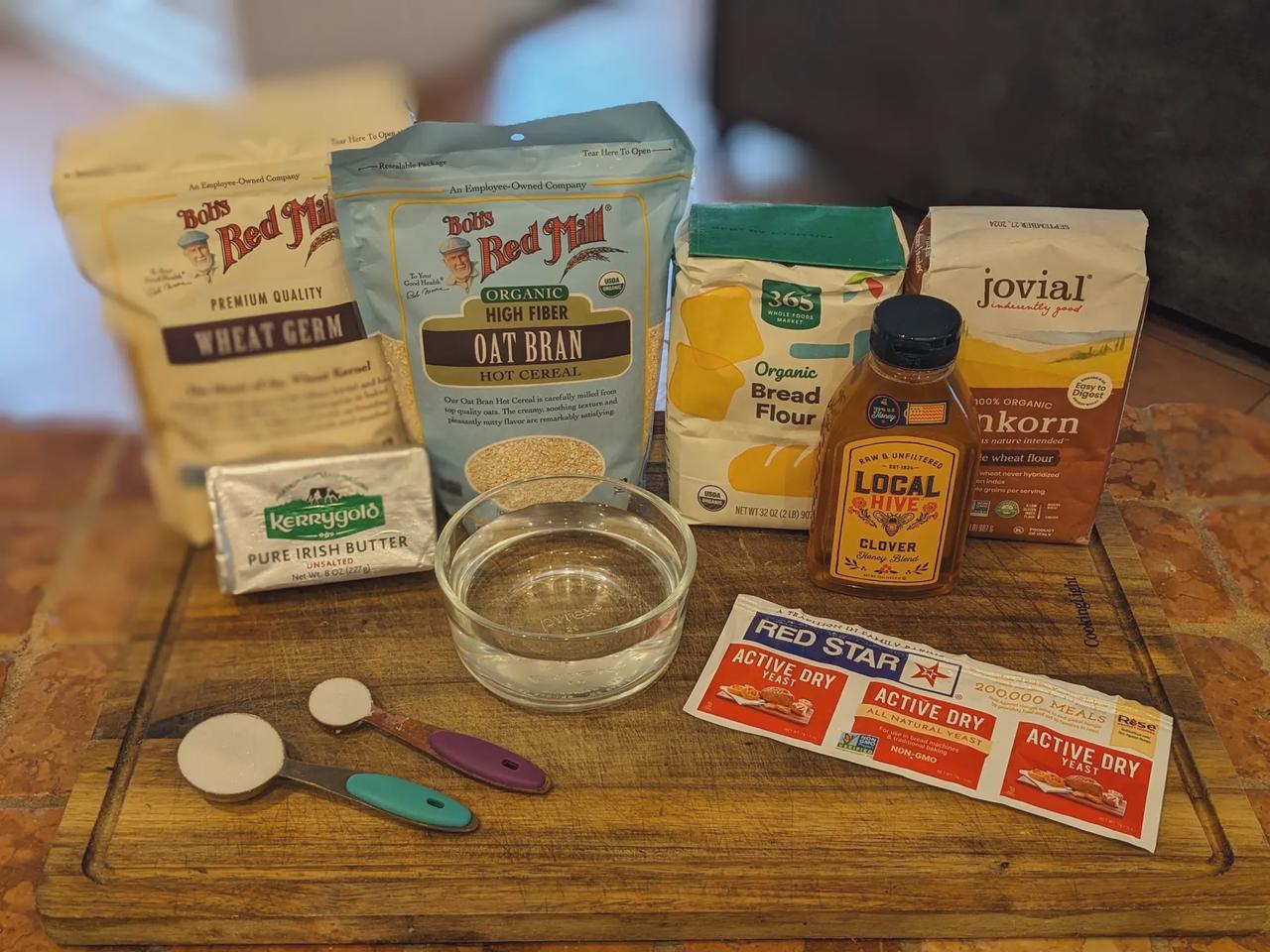

To The Kitchen!
Full disclosure: I’m not a baker. I’m a cook. I’m a foodie.
The first problem (?) with baking is that it’s dominated by sweet things, and I’m more of a savory person. The second problem—and I’m not ashamed to admit this—baking is unconditionally precise, and I’m more of a “throw in a pinch of this and a dash of that” kind of guy.
But I’m also a problem solver, and I love a challenge.
Let’s Make Some Bread
My wife said asking Gippity for a bread recipe might be fun. When I eat carbs, I like to make sure they’re high in fiber. So, I asked Gippity for a high-fiber white bread recipe.
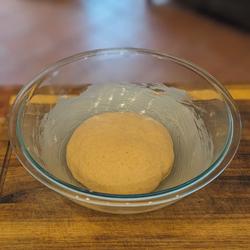
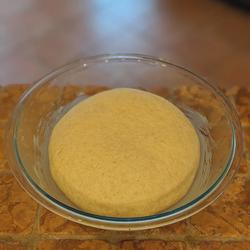
After kneading all the ingredients together (a process I did by hand, which was a 10-minute workout, to be sure), I let the dough rise for an hour.
Check out the before and after shots. It’s always fascinating to me how much dough rises.
After this step, I punched it down and put it into a loaf pan to rise again.
It was a simple matter of baking, cooling, and slicing.

You’ll notice that the bread is a little darker than you might expect. I wouldn’t call it “white” bread, but it’s not entirely “wheat” bread. It’s somewhere in between.

High-Fiber White Bread
High-fiber white bread is a fantastic idea for those who love the softness of white bread but want to amp up the fiber content. Let me share a recipe I've tweaked for a perfect balance of softness and fiber richness.
Ingredients
- 2 cups bread flour
- 1 cup whole wheat flour
- 1/2 cup oat bran
- 2 tablespoons wheat germ
- 1 tablespoon sugar
- 1 teaspoon salt
- 1 packet (2 1/4 teaspoons) active dry yeast
- 1 1/4 cups warm water (about 110°F)
- 2 tablespoons unsalted butter, melted
- Optional: 1 tablespoon honey or molasses for a touch of sweetness
Instructions
- Prepare the Yeast Mixture: In a small bowl, dissolve the sugar in warm water. Sprinkle the yeast over the top and let it sit for about 5 minutes or until it becomes frothy.
- Mix the Dry Ingredients: Mix bread flour, whole wheat flour, oat bran, and wheat germ in a large bowl. Add salt and mix again.
- Combine Wet and Dry Ingredients: Make a well in the center of the dry ingredients. Pour in the yeast mixture and melted butter. If you’re adding honey or molasses, add it now.
- Knead the Dough: Mix everything together to form a dough. Turn it onto a floured surface and knead for about 10 minutes or until the dough is smooth and elastic.
- First Rise: Place the dough in a greased bowl, cover it with a damp cloth, and let it rise in a warm place for about 1 hour or until doubled in size.
- Shape the Bread: Punch down the risen dough and shape it into a loaf. Place it in a greased 9x5 inch loaf pan.
- Second Rise: Cover the loaf pan and let the dough rise for another 30 minutes.
- Bake the Bread: Preheat your oven to 375°F. Bake the bread for 30-35 minutes, until the top is golden brown and the loaf sounds hollow when tapped on the bottom.
- Cooling: Remove the bread from the oven and let it cool in the pan for 10 minutes. Then, transfer it to a wire rack to cool completely.
This bread is excellent for sandwiches or slathered with butter and jam. It offers a delightful texture, the heartiness of whole grains, and a boost of fiber without compromising on the soft, comforting essence of classic white bread.
Enjoy baking, and let your kitchen be filled with the wonderful aroma of freshly baked bread! 🍞✨

The Verdict
This recipe was a mixed bag for me.
- On the one hand, my family loved it and couldn’t stop singing its praises.
- On the other hand, I asked for white bread, and this is not white bread.
The problem is that I asked for “high-fiber white bread.” I admit that most ways of increasing fiber in bread will make it browner. No matter; it was still delicious, so I’ll give it the ol’ thumbs up.
